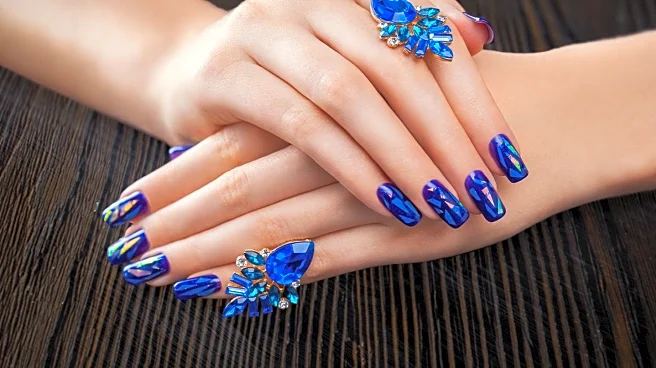What's Happening?
The safety of gel manicures is under scrutiny following the European Union's ban on TPO, a chemical used in gel nail polishes as a photoinitiator. This decision was based on animal studies suggesting potential harm to fertility or fetal development. The UK is expected to follow suit next year. Concerns have also been raised about Hema, another ingredient linked to allergic contact dermatitis. Nail salon workers are particularly vulnerable to exposure, with studies indicating high levels of photoinitiators in salon environments. Despite these concerns, safer alternatives to TPO are available, and experts recommend choosing salons that follow best practices.
Why It's Important?
The ban on TPO highlights growing concerns about the safety of chemicals used in beauty products, particularly for salon workers who face daily exposure. This development may lead to increased scrutiny and regulation of cosmetic ingredients, impacting the beauty industry and consumer choices. As awareness of potential health risks rises, consumers may demand more transparency and safer alternatives, influencing market trends and product formulations. The issue also underscores the need for effective enforcement of regulations to ensure compliance and protect public health.
What's Next?
The beauty industry may see a shift towards safer formulations and increased regulation as the UK prepares to implement the TPO ban. Salons and manufacturers will need to adapt to these changes, potentially facing challenges in sourcing compliant materials. Researchers and regulatory bodies may continue to investigate the safety of other chemicals used in nail products, leading to further restrictions or guidelines. Consumers are likely to become more informed and cautious, seeking out salons that prioritize safety and transparency.
Beyond the Headlines
The debate over gel manicure safety raises broader questions about the regulation of cosmetic products and the balance between consumer demand and health risks. The potential for allergic reactions and long-term health impacts from chemical exposure highlights the importance of rigorous testing and oversight. This issue also reflects wider societal concerns about environmental and occupational health, as salon workers face unique risks from prolonged exposure to potentially toxic substances. As the beauty industry evolves, it must address these challenges to maintain consumer trust and ensure worker safety.












